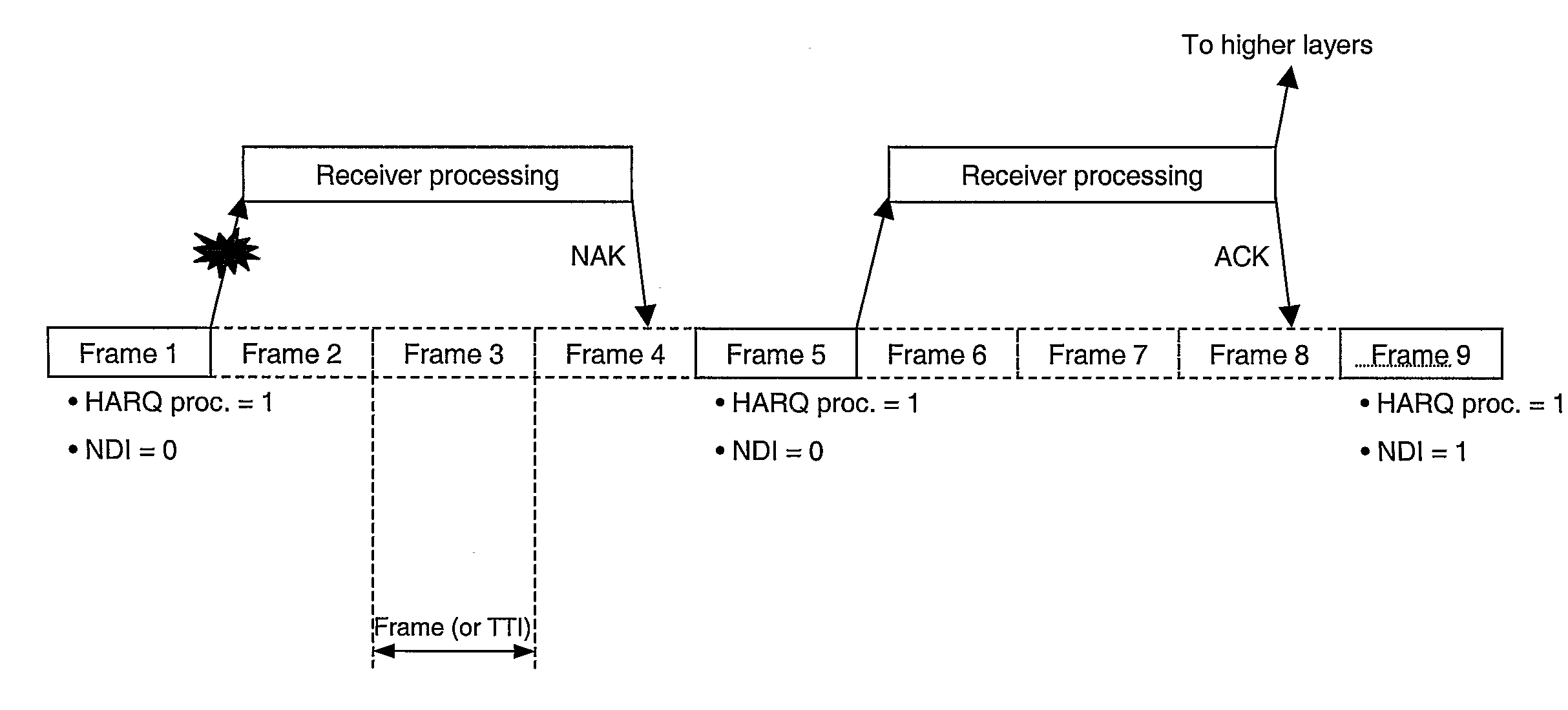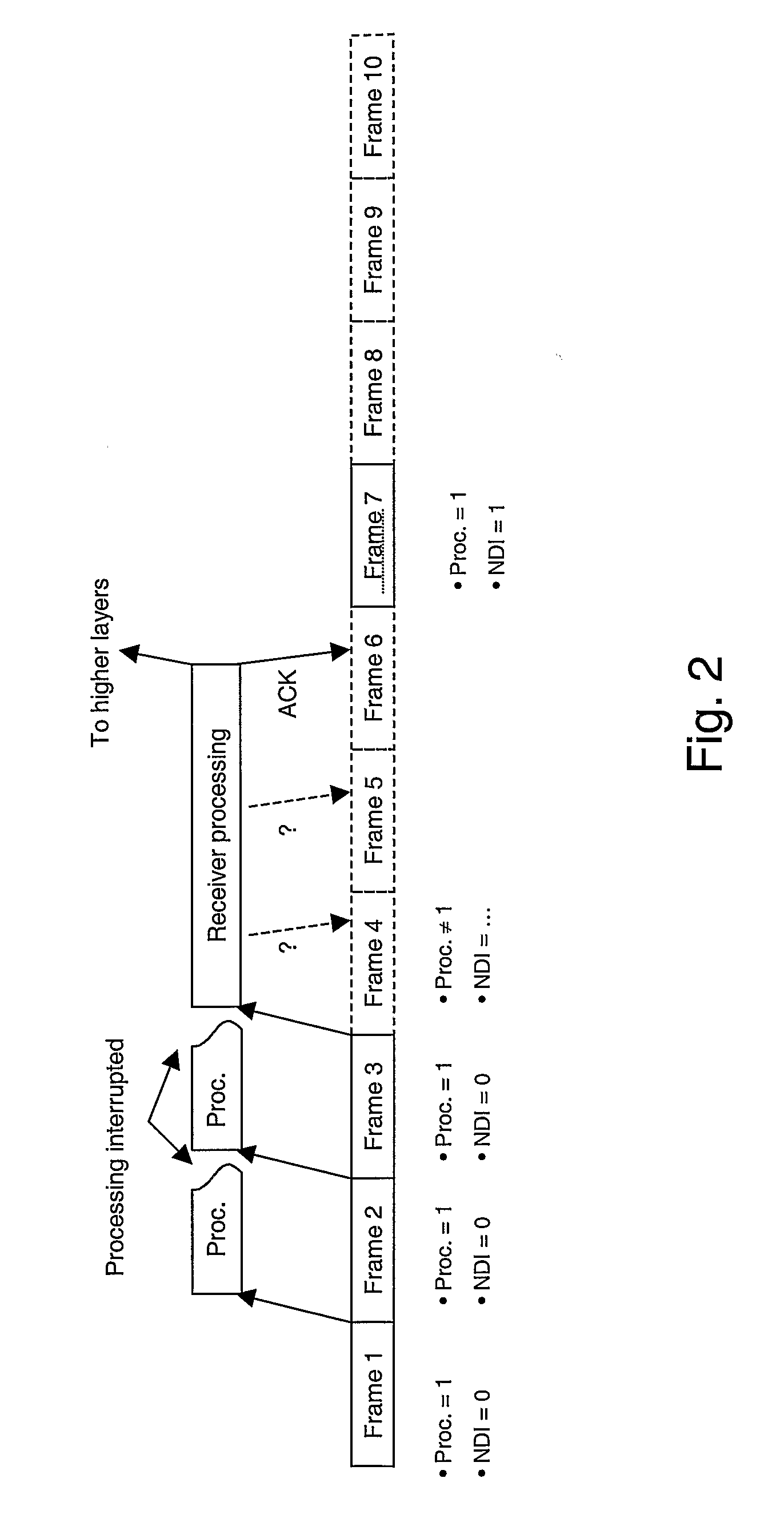Method and System for Providing Autonomous Retransmissions in a Wireless Communication System
a wireless communication system and wireless communication technology, applied in wireless communication, multi-channel allocation, wireless communication, etc., can solve problems such as buffer handling, dynamic tti is not in line with the current wcdma specifications, and may be controversial and/or complicated to introduce in specifications, etc., to reduce overall delays, reduce data rate, and longer transmission intervals
- Summary
- Abstract
- Description
- Claims
- Application Information
AI Technical Summary
Benefits of technology
Problems solved by technology
Method used
Image
Examples
Embodiment Construction
[0024] The invention is applicable to the WCDMA enhanced uplink, which is currently under standardization in 3GPP. It may also be applicable to other future standards. In the following description, for purposes of explanation and not limitation, specific details are set forth such as particular architectures, interfaces, techniques, etc. in order to provide a thorough understanding of the present invention. However, it will be apparent to those skilled in the art that the present invention may be practiced in other embodiments that depart from these specific details. In other instances detailed descriptions of well-known devices, circuits, and methods are omitted so as not to obscure the description of the present invention with unnecessary detail.
[0025]FIG. 2 illustrates autonomous retransmissions from a terminal without waiting for the ACK / NAK signal from the network, in accordance with a preferred embodiment of the present invention. A method for solving the problem of a too hig...
PUM
 Login to View More
Login to View More Abstract
Description
Claims
Application Information
 Login to View More
Login to View More - R&D
- Intellectual Property
- Life Sciences
- Materials
- Tech Scout
- Unparalleled Data Quality
- Higher Quality Content
- 60% Fewer Hallucinations
Browse by: Latest US Patents, China's latest patents, Technical Efficacy Thesaurus, Application Domain, Technology Topic, Popular Technical Reports.
© 2025 PatSnap. All rights reserved.Legal|Privacy policy|Modern Slavery Act Transparency Statement|Sitemap|About US| Contact US: help@patsnap.com



